Spring and Summer and very busy times on the homestead. The lambs are on the ground, the garden is in and growing rapidly. So are the weeds. The animals need milking and taking out to pasture so that they can graze. And the linen and field peas are growing rapidly. In August the dye flowers will be ready to dye with, and the garden begins to provide 90% of the daily food for both us and our livestock. The llamas begin to have their crias and the baby bunnies are being born, growing, and going to their new homes from now till the end of October.
Every day I admire the blue flowers in the flax field, rippling in the breeze. It amazes me that such a precious fiber as linen is growing in bundles along the stem of each plant, and we can get oil seeds as well from the same plant.
In July, the temperatures are finally warm enough to rett the flax stocks in the retting tank, a re-purposed bath tub that we trash picked at the dump. The stocks go in clean water and a fermentation process takes place where the pectins that hold the bundles of fibers on the outside of the stem, are digested, and the flax fibers are released from their woody prison. After a week, the putrid water is dumped out on the grass — its stinks but it is high in nitrogen and helps the grass grow. Fresh water is put in the tank and that stocks are left for a second week before they are removed and allowed to dry out. This step is necessary before the flax is broken and the linen is ‘won’.
July is also the time to harvest medicinal herbs for tinctures and balms to replenish the homestead medicine chest. In July, I harvest yarrow, St. Johns Wort, Comfrey, Horehound, and roses.
Joybilee Farm looks beautiful in July. And the busyness is evident.
- Bedtime in the barnyard
- Flax break
- Rippling means to take the seed bolls off the flax.
- Rippling the flax
- Flax flowering


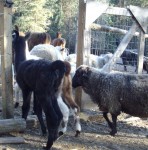
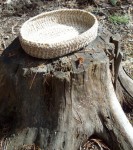
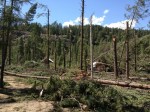




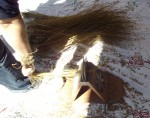
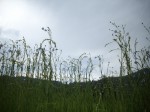
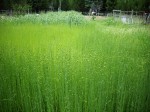
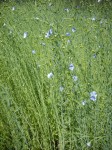
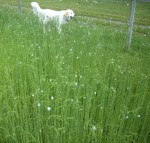
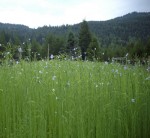
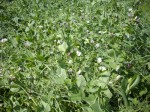



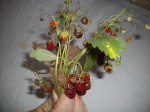
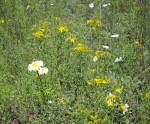



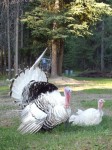

Leave a Reply